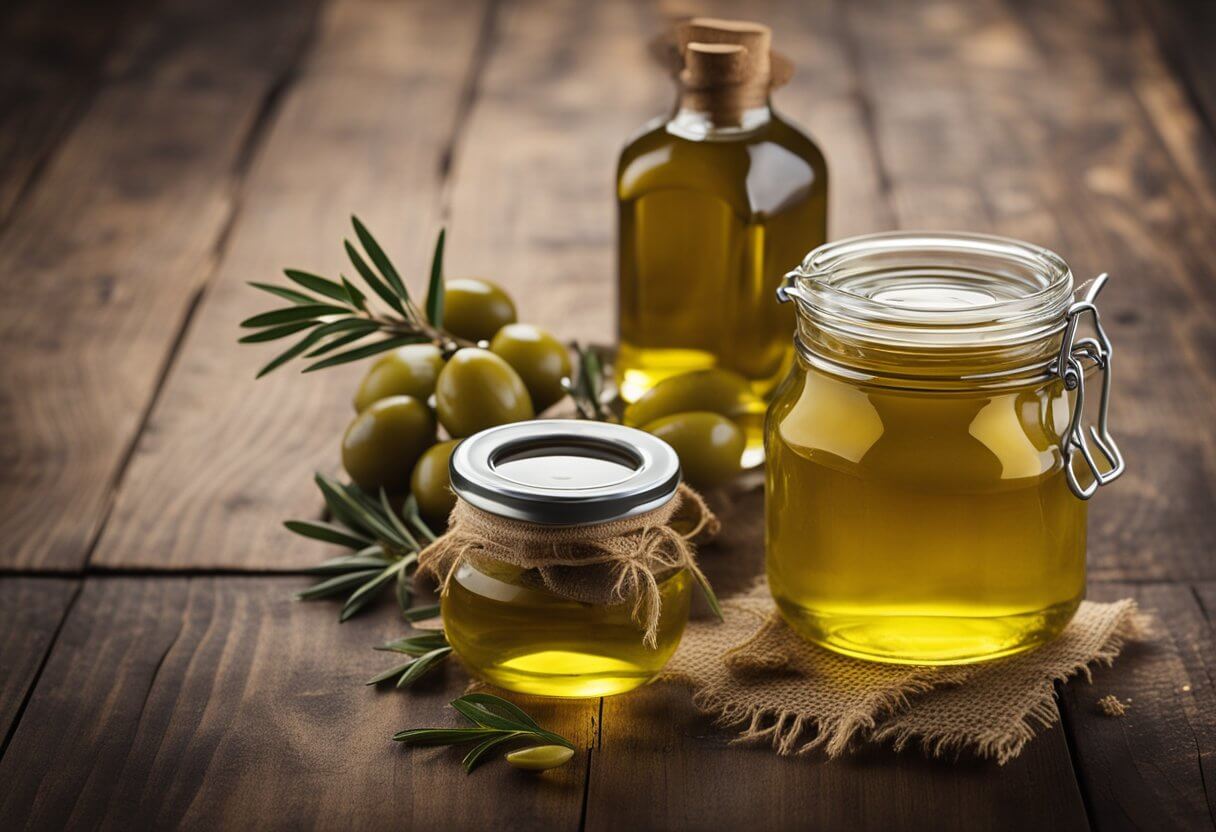Ghee vs Olive Oil: A Complete Comparison
When it comes to health benefits, ghee and olive oil both have their strengths. Ghee is a good source of healthy fats and contains vitamins A, D, and E. It also has a high smoke point, which makes it ideal for high-heat cooking methods like frying and sautéing. Olive oil is rich in monounsaturated and polyunsaturated fats, which can help lower cholesterol levels and reduce the risk of heart disease. It also contains antioxidants and anti-inflammatory compounds that can benefit overall health.
However, when it comes to choosing between ghee and olive oil, there are several factors to consider, including taste, cooking method, and nutritional profile. In this article, we will explore the similarities and differences between ghee and olive oil to help you make an informed decision about which one is right for you.
Brief Overview of the Oils
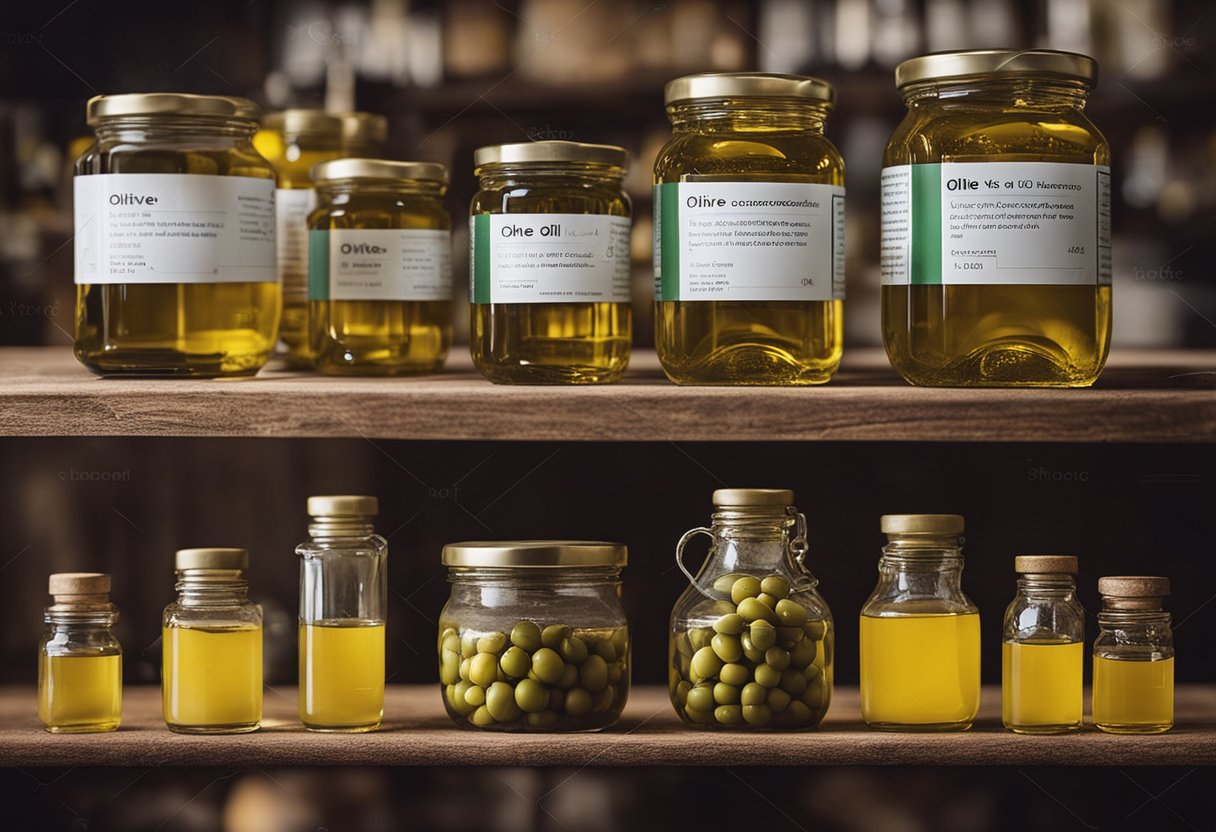
When it comes to cooking oils, Ghee and Olive Oil are two of the most popular options available. Each oil has its own distinct flavor and nutritional benefits, making them great choices for different types of cooking.
Ghee is a type of clarified butter that has a nutty flavor and a high smoke point, making it a great option for high-heat cooking methods like frying. It is also a popular ingredient in Indian cuisine and is often used in place of butter or oil. Ghee is a rich source of healthy fats, including conjugated linoleic acid (CLA), which has been shown to have anti-inflammatory properties and may help with weight loss.
Olive Oil, on the other hand, is made by pressing whole olives and has a distinctive pungent and bitter taste. It is a staple in Mediterranean cuisine and is often used in salad dressings, marinades, and dips. Olive oil is rich in heart-healthy monounsaturated fats and antioxidants, which can help reduce inflammation and improve heart health.
Difference in Smoke Point
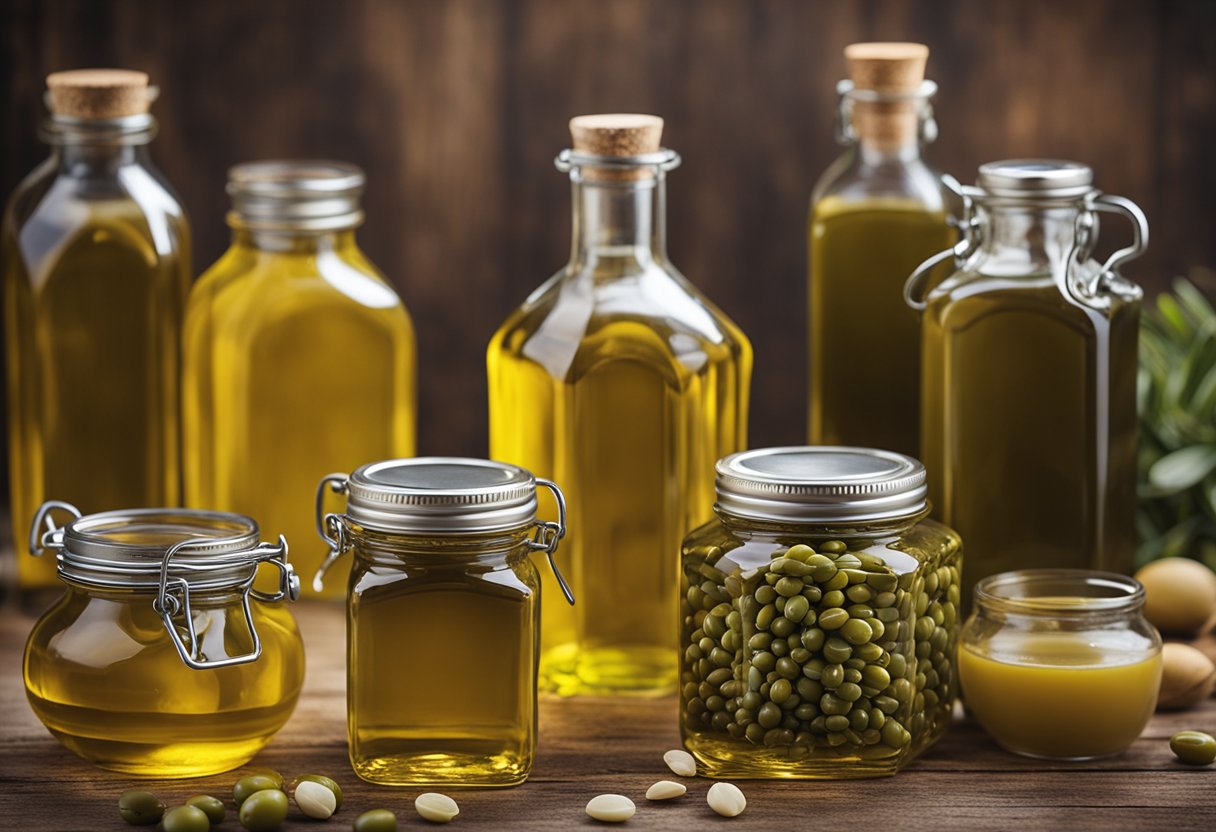
When it comes to cooking, the smoke point of an oil or fat is an important consideration. The smoke point is the temperature at which an oil or fat starts to smoke and break down, producing harmful compounds and an unpleasant taste and smell. Ghee and olive oil have different smoke points, which can affect their use in different cooking methods.
Ghee has a high smoke point of around 485°F (252°C), which makes it ideal for high-heat cooking methods such as frying, sautéing, and roasting. Its high smoke point means that it won’t break down or burn easily, making it a more stable cooking fat. Additionally, ghee has a nutty flavor that can add a delicious taste to your dishes.
On the other hand, olive oil has a lower smoke point of around 375°F (191°C) for extra-virgin olive oil and 450°F (232°C) for refined olive oil. While extra-virgin olive oil has a stronger flavor and is best used in salads and as a finishing oil, refined olive oil has a neutral flavor and a higher smoke point, making it suitable for sautéing, frying, and baking.
It’s important to note that heating any oil beyond its smoke point can produce harmful compounds, so it’s best to use the appropriate oil or fat for the cooking method you’re using. If you’re unsure about the smoke point of an oil or fat, it’s best to err on the side of caution and use a lower heat setting.
Difference in Flavor
Ghee and olive oil have distinct flavors that can affect the taste of your dishes. Ghee has a rich, buttery flavor with a nutty undertone. This nutty flavor comes from the process of heating the butter to remove the milk solids and water. The result is pure, clarified butter that has a high smoke point and can be used for high-heat cooking methods.
On the other hand, olive oil has a mild, fruity flavor with a slightly bitter aftertaste. The flavor of olive oil can vary depending on the type of olives used and the region where they were grown. Extra-virgin olive oil is considered the highest quality and has a darker color and stronger flavor than regular olive oil. It is also more nutrient-dense and has a lower smoke point than ghee.
When cooking with ghee, the nutty flavor can enhance the taste of your dishes, especially in Indian and Middle Eastern cuisine. It is perfect for sautéing vegetables, frying eggs, and making popcorn. Olive oil is best used for dressings, marinades, and low-heat cooking methods such as roasting and baking.
Difference in Nutritional Composition
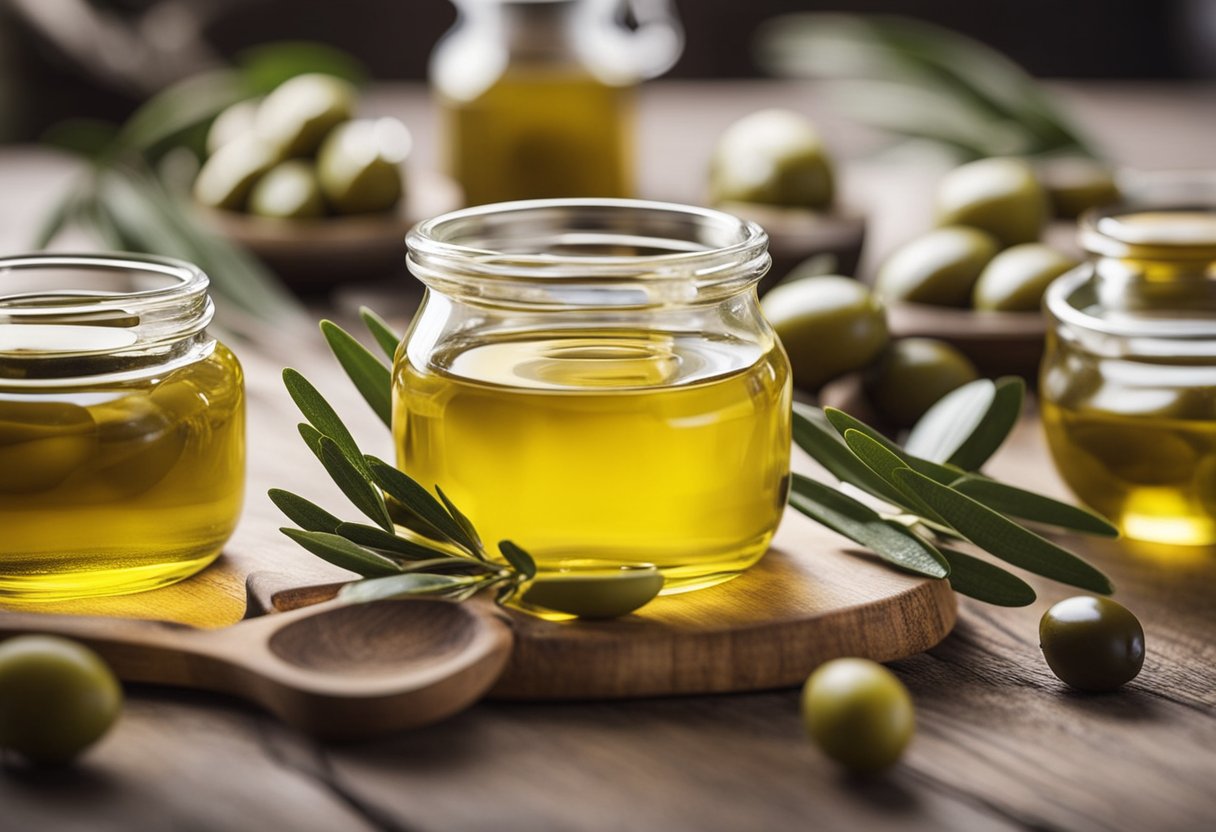
When it comes to nutritional composition, ghee and olive oil have some similarities and differences. Here are some key points to keep in mind:
Calories: Both ghee and olive oil are calorie-dense foods. One tablespoon of ghee contains around 120 calories, while one tablespoon of olive oil contains around 120 calories as well.
Fat content: Ghee is a type of clarified butter that is made by heating butter to remove the milk solids and water. It is high in saturated fat, with around 14 grams of fat per tablespoon. Olive oil, on the other hand, is a monounsaturated fat that contains around 14 grams of fat per tablespoon.
Vitamins and minerals: Ghee is a good source of vitamin A and vitamin E, while olive oil is a good source of vitamin K and vitamin E. Both ghee and olive oil contain small amounts of other vitamins and minerals.
Cholesterol: Ghee is high in cholesterol, with around 33 milligrams of cholesterol per tablespoon. Olive oil, on the other hand, is cholesterol-free.
Smoke point: The smoke point is the temperature at which an oil begins to smoke and break down, producing harmful compounds. Ghee has a higher smoke point than olive oil, making it better for high-heat cooking methods like frying and roasting.
Difference in Health Benefits and Risks
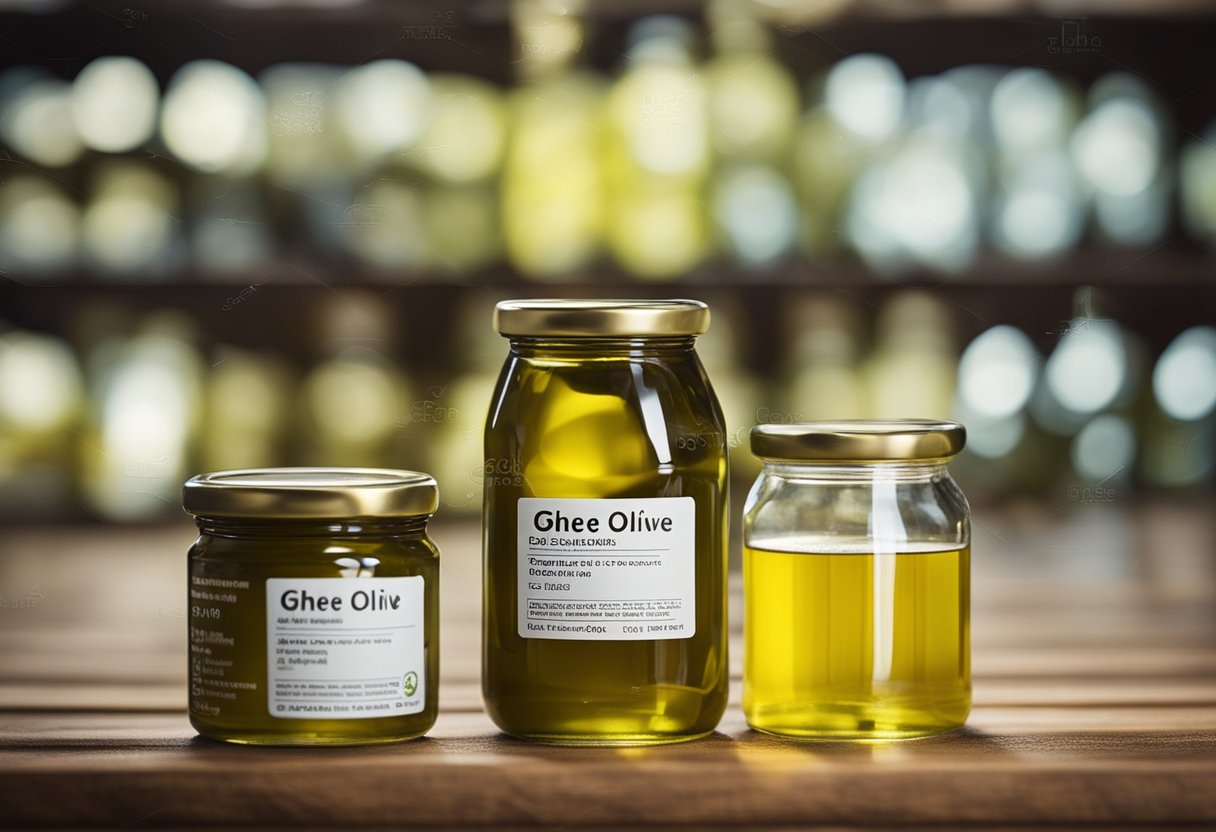
When it comes to health benefits, both ghee and olive oil have their unique advantages. Here are some of the differences:
Ghee
Ghee is a rich source of healthy fats, which can help boost your energy levels and keep you feeling full for longer. It is also a great source of vitamins A, D, E, and K, which are essential for maintaining healthy skin, bones, and eyesight.
One of the biggest benefits of ghee is that it is lactose-free and casein-free, making it an excellent option for people with dairy allergies or sensitivities. Additionally, ghee contains butyric acid, which has been shown to have anti-inflammatory properties and may help improve gut health.
However, it is important to note that ghee is high in saturated fat, which can increase your risk of heart disease if consumed in large amounts.
Olive Oil
Olive oil is a rich source of monounsaturated fats, which are known to have anti-inflammatory properties and may help reduce your risk of heart disease. It is also loaded with antioxidants, which can help protect your cells from damage caused by free radicals.
Olive oil has been shown to have a number of health benefits, including reducing inflammation, improving brain function, and lowering your risk of stroke and heart disease.
However, it is important to choose high-quality, extra-virgin olive oil to ensure that you are getting all of the health benefits. Some lower-quality olive oils may be mixed with other oils or contain impurities, which can negate the health benefits.
Difference in Price
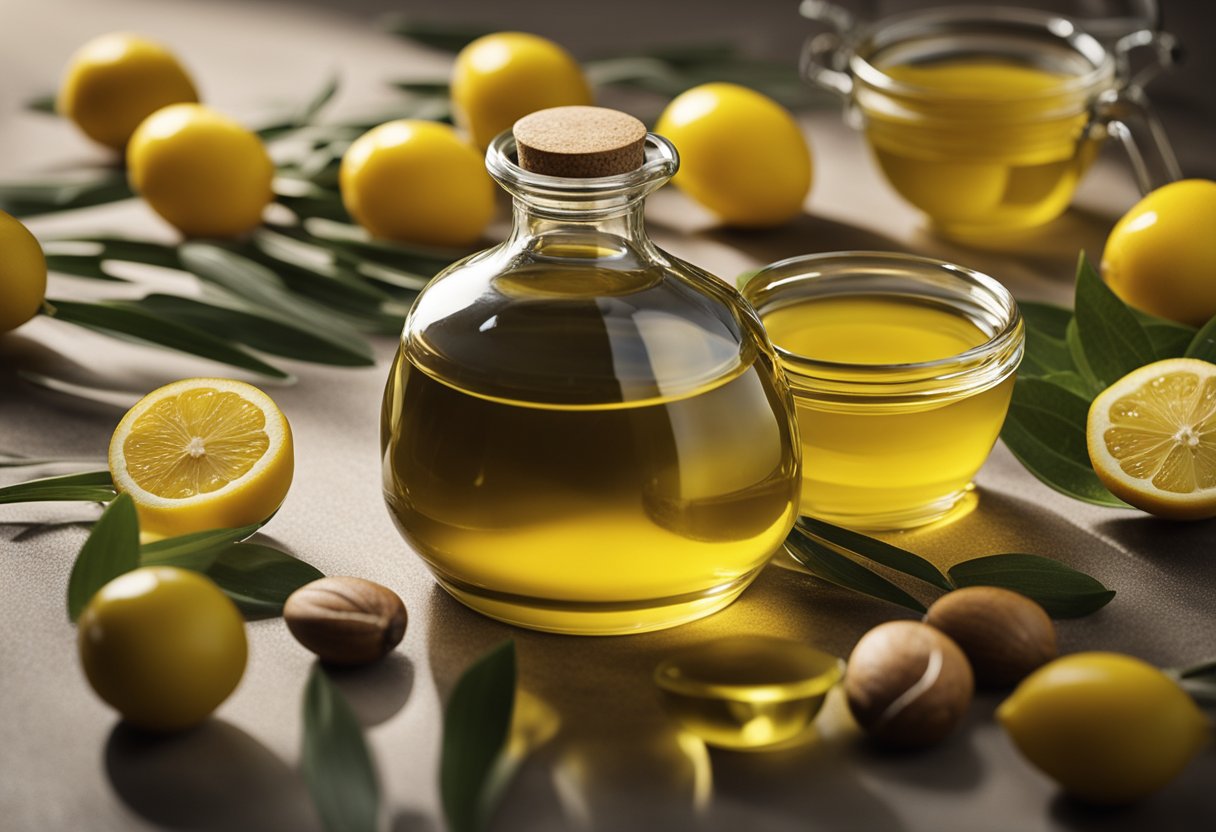
When it comes to price, ghee is generally more expensive than olive oil. This is because ghee is made by clarifying butter, which requires more time and effort than simply pressing olives to extract oil. Additionally, the quality of the butter used to make ghee can also affect its price.
On the other hand, olive oil is widely available and comes in a range of prices, from affordable to premium. The price of olive oil can vary depending on factors such as the quality of the olives used, the region where they were grown, and the production methods used.
If you’re on a budget, olive oil may be the more economical choice. However, if you’re willing to spend a bit more for a richer flavor and potential health benefits, ghee may be worth the extra cost.
Difference in Availability
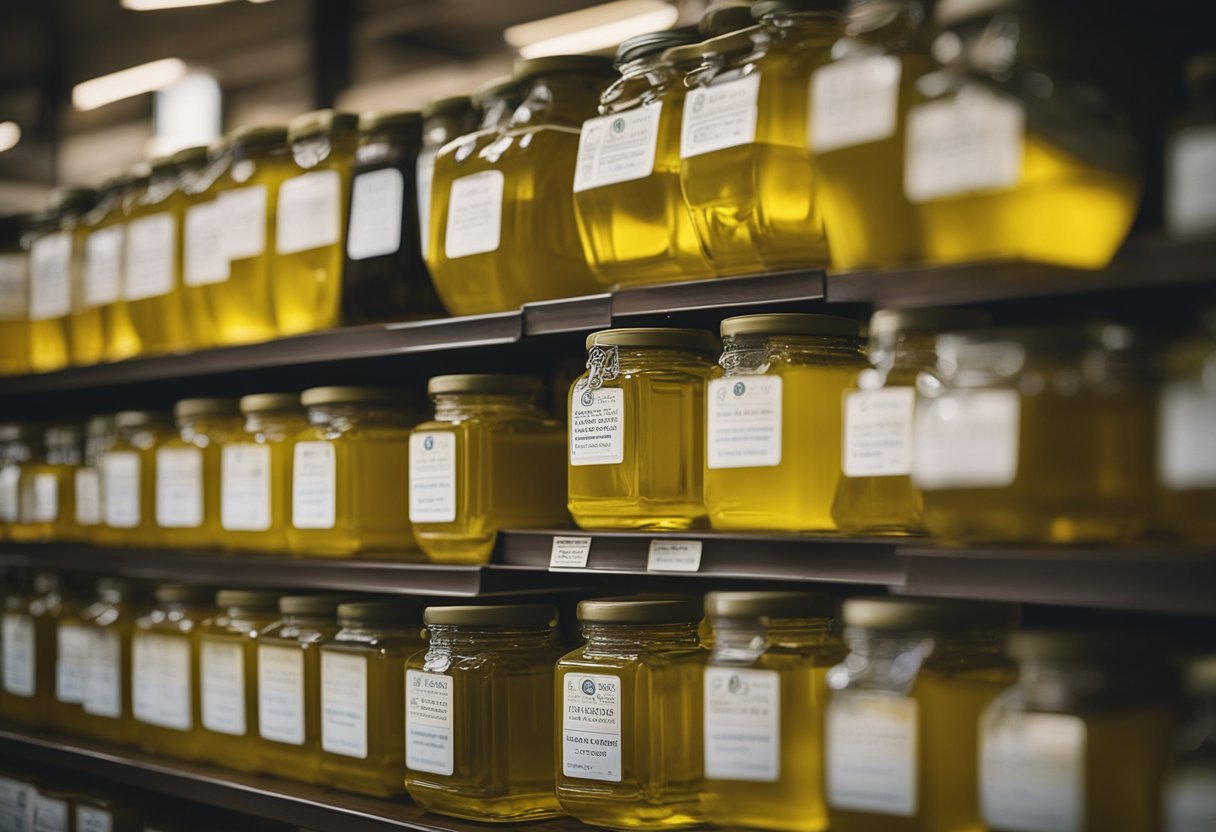
When it comes to availability, olive oil is much more widely available than ghee. You can find olive oil in almost any grocery store, while ghee may require a trip to a specialty store or health food store.
This is because olive oil is produced in many countries around the world, including Italy, Spain, Greece, and the United States. On the other hand, ghee is primarily produced in India and other parts of South Asia.
However, the popularity of ghee is increasing, and it is becoming more widely available in many countries. Some grocery stores now carry ghee in their international food sections, and it is also available online.
In terms of cost, olive oil is generally less expensive than ghee. This is because the production process for olive oil is simpler and requires less labor than the process for making ghee.
Can You Substitute Them in Recipes
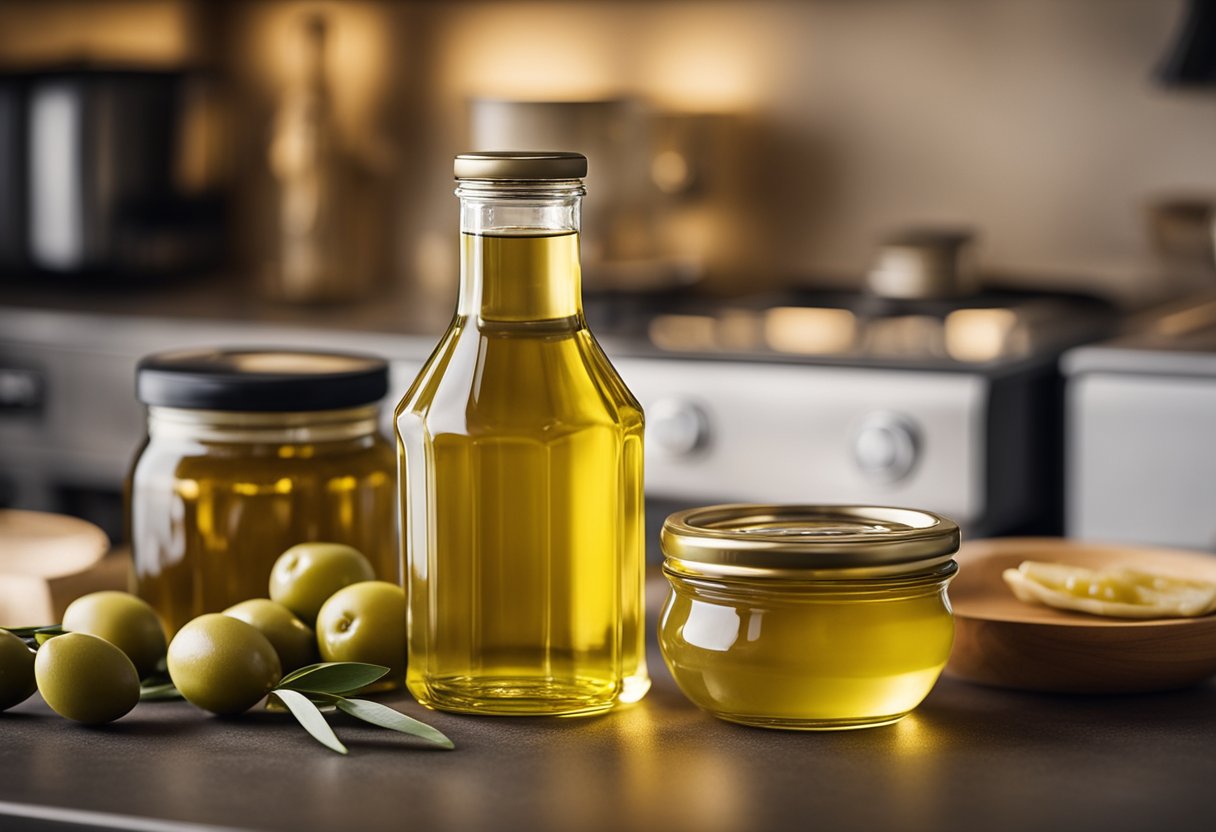
When it comes to cooking, you may wonder if you can substitute ghee for olive oil or vice versa. The answer is yes, but it depends on the recipe and the cooking method.
Ghee has a high smoke point, which means it can withstand high temperatures without burning. It is a great option for frying and sautéing. On the other hand, olive oil has a lower smoke point and is better suited for low to medium heat cooking, such as roasting or baking.
If you want to substitute ghee for olive oil, keep in mind that ghee is a solid at room temperature, so you’ll need to melt it before using it in liquid recipes like salad dressings. Additionally, ghee has a distinct nutty flavor, so it may alter the taste of your dish.
Conversely, if you want to substitute olive oil for ghee, keep in mind that olive oil has a distinct flavor that may not be suitable for all dishes. It is also a liquid at room temperature, so it may not work as well in recipes that require a solid fat.
Can You Mix Them
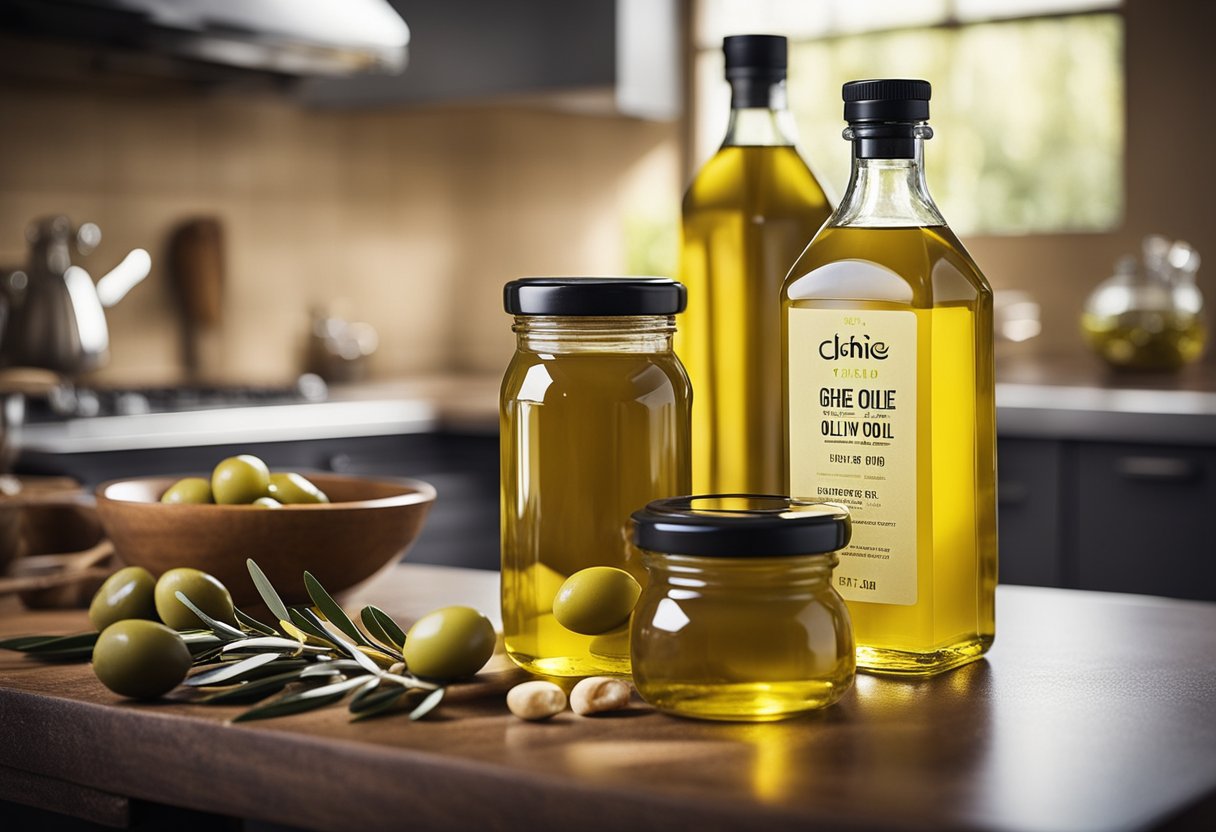
Yes, you can mix the two. Both of these fats are healthy and can be used in a variety of ways in your cooking. Mixing them can offer a unique flavor profile and health benefits.
One way to mix ghee and olive oil is to use them in a salad dressing. You can mix equal parts of ghee and olive oil with some apple cider vinegar, honey, and Dijon mustard for a delicious dressing that’s perfect for any salad.
Another way to mix ghee and olive oil is to use them in your cooking. For example, you can use ghee to sauté your vegetables and then add a drizzle of olive oil for some added flavor and health benefits.
It’s important to note that ghee has a higher smoke point than olive oil, which means it can be used at higher temperatures without burning. However, olive oil has a lower smoke point and can become bitter when heated too much, so it’s best to use it at lower temperatures or as a finishing oil.
Difference in Storage

When it comes to storage, both ghee and olive oil have different requirements. Here are a few things to keep in mind:
Ghee
Ghee has a long shelf life and can be stored at room temperature for up to six months. However, if you live in a hot and humid climate, it’s best to store it in the refrigerator. This will help prevent it from going rancid. If you want to extend its shelf life, you can also freeze ghee for up to a year.
Olive Oil
Olive oil is more delicate than ghee and can go rancid quickly if not stored properly. It’s best to store it in a cool, dark place away from light, heat, and air. A pantry or cupboard away from the stove is a good option. Once opened, olive oil should be used within six months to a year. You can also store it in the refrigerator, but it may solidify. If this happens, simply let it come to room temperature before using it.
How to Tell If the Oil Has Gone Bad

Both ghee and olive oil can go bad over time, and it’s important to know how to tell if the oil has gone bad before using it. Here are some signs to look out for:
Smell and Taste
One of the most obvious signs that oil has gone bad is if it has a rancid smell. If the oil has a strong, pungent aroma that is unpleasant, it is likely that it has gone bad. Another sign is if the oil has a strange taste. If it tastes off or has a sour or bitter flavor, it is probably no longer good to use.
Appearance
Another way to tell if the oil has gone bad is to look at its appearance. If the oil has become cloudy or has developed sediment at the bottom of the container, it may have gone bad. Additionally, if the oil has changed color and has become darker, it may no longer be good to use.
Expiration Date
It’s also important to check the expiration date on the oil. While ghee can last for several months if stored properly, olive oil has a shorter shelf life and should be used within a few months of opening. If the oil has passed its expiration date, it is best to discard it.
A Summary Table

To help you easily compare ghee vs olive oil, we have created a table that summarizes all the key differences between the two options based on usage, smoke point, flavor, nutritional composition, health benefits, risks, price, and availability.
| Criteria | Ghee | Olive Oil |
|---|---|---|
| Usage | Indian and Middle Eastern cuisine, high-heat cooking, sautéing, frying, baking | Mediterranean cuisine, low-heat cooking, salad dressings, dips, marinades |
| Smoke Point | 485°F (250°C) | Extra Virgin Olive Oil: 375°F (191°C), Virgin Olive Oil: 420°F (215°C), Refined Olive Oil: 470°F (243°C) |
| Flavor | Nutty and rich | Pungent and bitter |
| Nutritional Composition | High in saturated fat and cholesterol, low in lactose and casein, contains vitamins A, D, E, and K2 | High in monounsaturated and polyunsaturated fats, low in saturated fat and cholesterol, contains vitamin E and antioxidants |
| Health Benefits | May improve digestion, boost immunity, and promote healthy skin and hair | May reduce inflammation, lower cholesterol, and prevent chronic diseases |
| Risks | High in saturated fat and cholesterol, may trigger dairy allergies or lactose intolerance | May become rancid due to oxidation, may be adulterated with other oils |
| Price | More expensive than vegetable oils, but less expensive than high-quality olive oil | Varies depending on the type and quality |
| Availability | Widely available in grocery stores and online | Widely available in grocery stores and online |
As you can see, ghee and olive oil have their own unique characteristics and uses. While ghee is a great option for high-heat cooking and has potential health benefits, it is also high in saturated fat and cholesterol. Olive oil, on the other hand, is a healthier option with lower levels of saturated fat and cholesterol, but has a lower smoke point and may become rancid over time. Ultimately, the choice between ghee and olive oil depends on your personal preferences, cooking needs, and health goals.
Other Comparable Oils
While ghee and olive oil are two of the most popular and widely used oils, there are other oils that can be used as substitutes or alternatives. Here are a few comparable oils to consider:
Coconut oil
Coconut oil is a popular substitute for both ghee and olive oil. It has a high smoke point, making it ideal for cooking at high temperatures. It also has a distinct flavor that can add a tropical twist to your dishes. Coconut oil is rich in medium-chain triglycerides (MCTs), which are quickly metabolized by the body and can provide a quick source of energy.
Avocado oil
Avocado oil is another healthy oil that can be used in place of ghee or olive oil. It has a high smoke point and a mild, buttery flavor that makes it a great choice for sautéing or roasting. Avocado oil is rich in monounsaturated fats, which can help lower cholesterol levels and reduce the risk of heart disease.
Sesame oil
Sesame oil is a flavorful oil that is commonly used in Asian cuisine. It has a nutty taste and aroma that can add depth to your dishes. Sesame oil has a high smoke point, making it a good choice for stir-frying and deep-frying. It is also rich in antioxidants and has anti-inflammatory properties.
Flaxseed oil
Flaxseed oil is a healthy oil that is rich in omega-3 fatty acids. It has a nutty flavor and a low smoke point, so it is best used in salad dressings or as a finishing oil. Flaxseed oil can help reduce inflammation and improve heart health.
When choosing an oil, it is important to consider its smoke point, flavor, and nutritional value. Each oil has its own unique characteristics, so it is worth experimenting with different oils to find the ones that work best for you.
